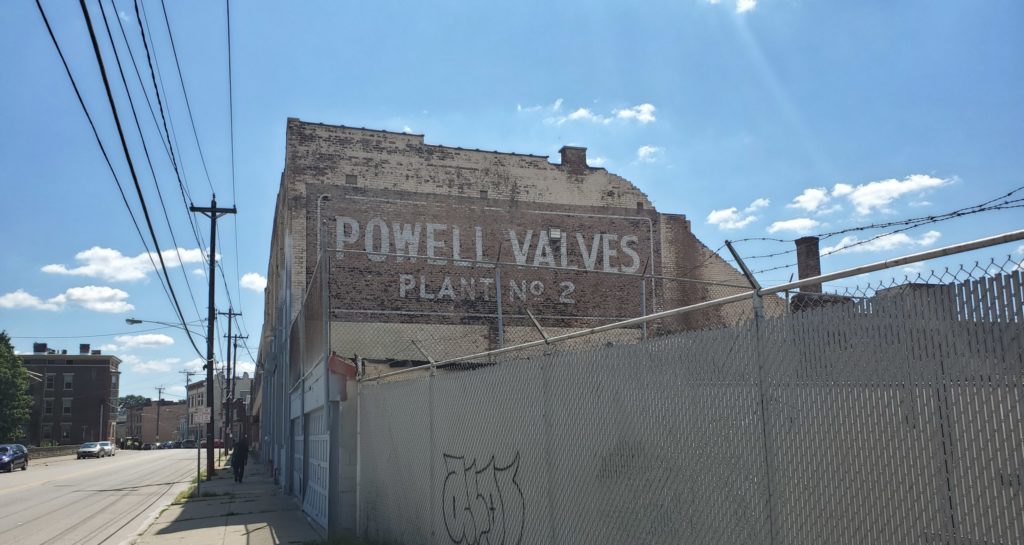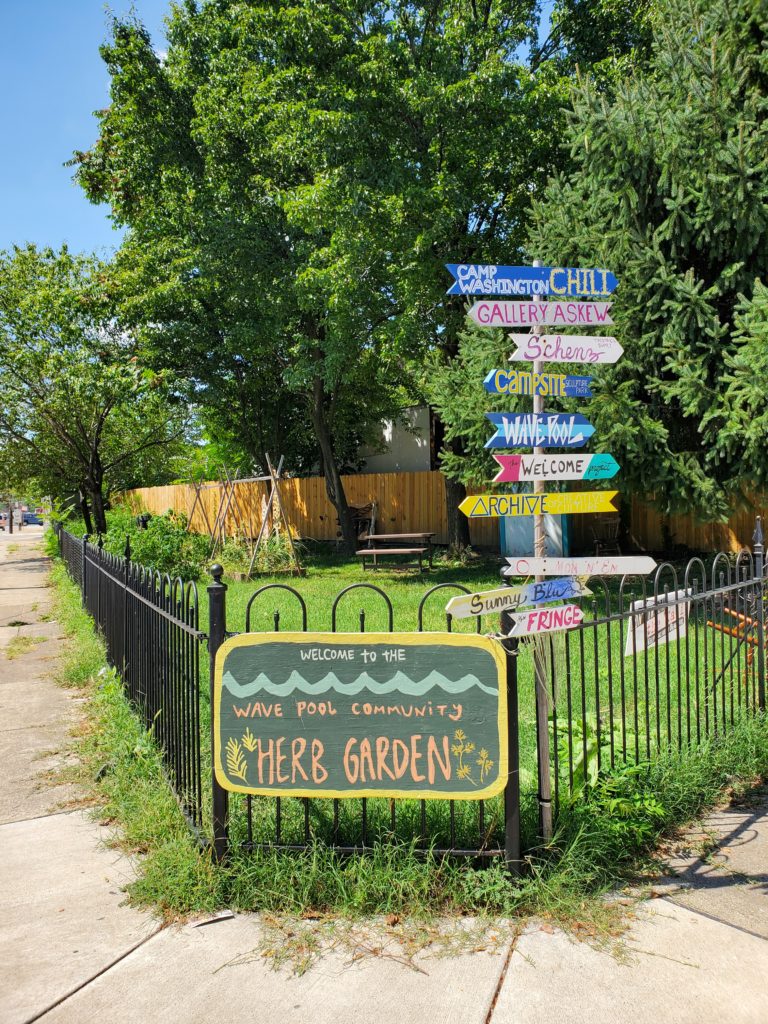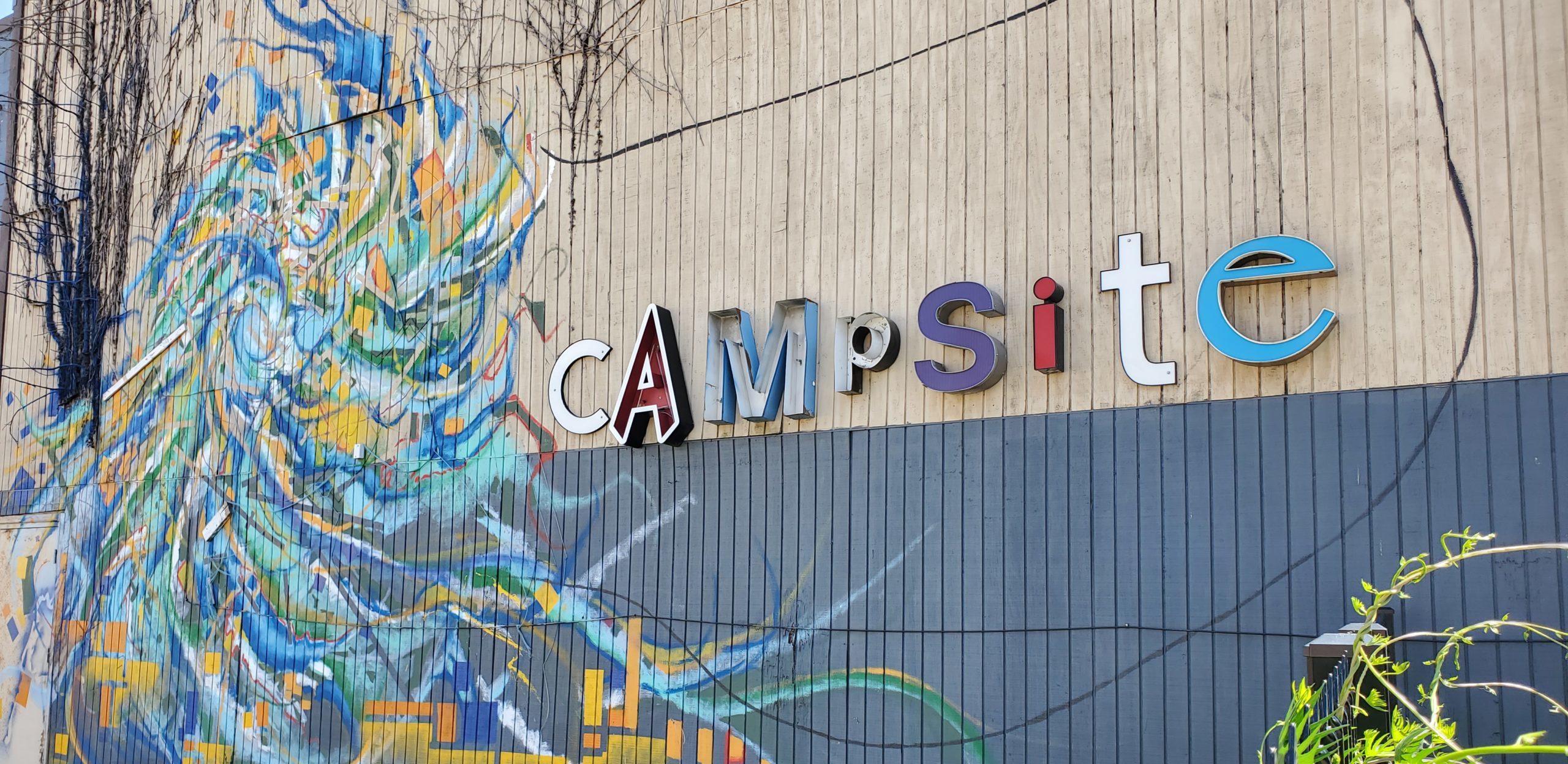The urban Appalachian population has become increasingly dispersed throughout Greater Cincinnati. While economic and social conditions once tied groups of people to specific areas, the changing economy and the ways people live have (in some cases) allowed the Appalachian community to take up residence in all parts of the city, and in other cases displaced lower income Appalachians from communities they once called home. However, one thing that emerges as the Urban Appalachian Community Coalition delves into the past and present conditions of historically Appalachian neighborhoods is that the culture of urban Appalachians remains influential even as the populations have changed. Camp Washington is a great example.
Camp Washington stands out among Cincinnati’s historically Appalachian neighborhoods for a few reasons. The most obvious is that it is quite small. The overall population of the neighborhood is less than areas like East Price Hill, for example, and the construction of Interstate 75 rendered the neighborhood even smaller. But it also stands out because of the ways Appalachians settled and lived in the neighborhood. The industries that once lined Spring Grove Avenue were the draw for Appalachians moving to Cincinnati, and the geography of Camp Washington encouraged people to settle along the Spring Grove Avenue corridor so that they lived and worked in the same area. People walked from their homes to work in factories and meat processing plants. These conditions allowed Camp Washington to tend toward an insularity that created something of its own culture.
Camp Washington during the time that urban Appalachians defined the neighborhood as tight-knit and mutually supportive. At one time, there were 28 bars in Camp Washington, many of them hosted country bands regularly. While this was great for dancing and blowing off steam from the labor of factory work, it also was conducive to fights and raising hell. Joe Gorman remembers his first contact with Camp Washington in 1975: “I was playing in a country band that played in a bar on Spring Grove Avenue. Back then, it was a wild Appalachian neighborhood.” Joe went on to explain that there was simply an anti-authority mentality that led people to question all official institutions, and this tended to make things a little unsettled, you might say.

Joe Gorman also served on the Camp Washington Community Development Corporation. He was the Executive Director for three years before retiring. This group worked closely with people like (now UACC Core Member) Mike Maloney and the Urban Appalachian Council to develop things like the Camp Washington School and GED programs for urban Appalachians. The factories frequently would not hire people without a high school diploma, and these community GED programs were instrumental in improving the economic conditions of countless urban Appalachians. Mike Maloney elaborated on some of this history. The Urban Appalachian Council teamed with a pastor in Camp Washington to create many of these programs that helped urban Appalachians attain their GEDs. Mike said, “The main Protestant church in Camp Washington was led by a pastor named Jim Egbert, who was charismatic and a great community organizer. We teamed with him to organize a community center directly across from his church.” This center was the site of much of the urban Appalachian advocacy in Camp Washington during this time. UAC set up and ran community education programs out of this community center.
In the 1970s, half the members of the Camp Washington Community Board were Appalachian. Together with the efforts of UAC and other community organizations, community activism and advocacy continued through the decade. However, by the 1980s, Camp Washington manufacturers and slaughter yards began to close, and the population of Camp Washington dwindled. Joe Gorman and Paul Rudemiller of the Camp Washington Community Development Corporation helped acquire as many as 53 buildings. Paul Rudemiller told me that he and others did much of the original investing with their own money. This helped retain some sense of community in the neighborhood. With the work of the Community Development Corporation and the rough outline of what remained of Camp Washington, the ground for what was to come remained in place.
Today, Camp Washington is experiencing something of a renewal. The urban Appalachian community remains primarily as elder residents who stuck around after retirement. But the new population of younger folks moving into the neighborhood appears to be bringing back the old attitudes of doing things their own way. A growing arts community exists in Camp Washington. Numerous small businesses are flourishing in the neighborhood and galleries are springing up. Sean Mullaney’s Campsite Sculpture Park operates as much as a community gathering point as a life-size sculpture garden. I asked Sean Mullaney his exact title with respect to Campsite. He offered “Big Kahuna, Campsite liaison, Ambassador, Greeter,” and a few more titles. He obviously wears many hats. If you walk by Campsite, you will see one of the mastodons that used to sit in front of the old Museum of Natural History and all manner of constantly changing sculptures and murals.

Just down the street, Wave Pool Gallery has taken hold of a corner. Cal Cullen who runs Wave Pool told me “Wave Pool is home to a community-based contemporary art gallery, a welcome project, a woodshop, and they also host art classes for kids.” Like Campsite, Wave Pool is a feature of the community in Camp Washington. The arts and community organizations have also opened the way for younger people to move into the neighborhood who bring their own version of the anti-authority ethos set in motion by the urban Appalachians many years ago. Just look for the mural of George Washington in a dress for evidence of this. The younger people in the neighborhood are as independent as the urban Appalachians of the 1960s and 70s, even if they are a little less likely to listen to Hank Senior.
The tight-knit ways of this neighborhood remain a fixture even as the demographics have changed. The old urban Appalachian presence is diminished, but some remain. Everyone I talked to for this article knew people who had been in Camp Washington for decades and are part of the urban Appalachian community. One of the challenges for the Urban Appalachian Community Coalition is to follow the changes in our neighborhoods and remain in contact with both the urban Appalachian communities and the others that shape our constantly changing city. Camp Washington offers a snapshot of how the urban Appalachian neighborhoods have drastically changed while they retain the groundwork of the Appalachian presence that once defined the area.
Mike Templeton is a writer, independent scholar, barista, cook, guitar player, and accidental jack-of-all-trades. Check out his profile in UACC’s new Cultural Directory. He lives in downtown Cincinnati with his wife who is a talented photographer. They spend their free time walking around the city snapping photos. She looks up at that the grandeur of the city, while Mike always seems to be staring at the ground.

